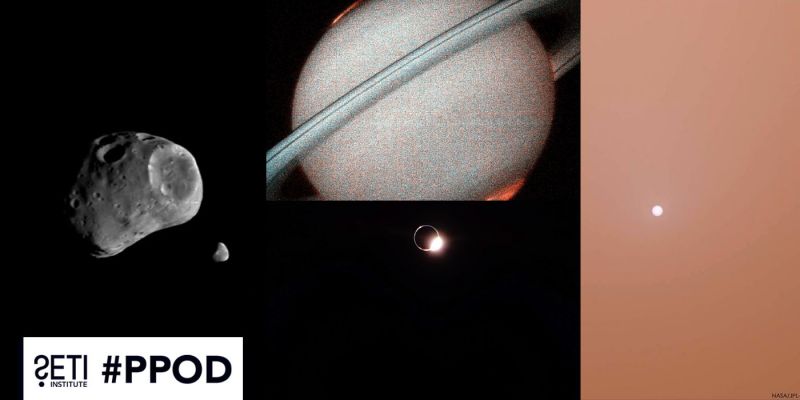
Most of the planets in the galaxy may be “FFPs” – free-floating planets that don’t orbit a star. SETI Institute Senior Astronomer Seth Shostak calls them “our lost children.” It may be possible for these lonely worlds to support life.
If FFPs are like Earth, they might even harbor life—tough, dark-loving microbes or other simple organisms that could really expand our notion of what the term “life” means.
…
The main aim in studying FFPs is to “better understand processes that govern formation and early evolution of planetary systems,” Radosław Poleski, an astronomer at the University of Warsaw and a member of McDonald’s team, told The Daily Beast. “This is one of the most important questions in astronomy.”
- Daily Beast: The Surprising Search for the Milky Way’s ‘Lost Children’
- SETI.org: SETI Talks – Could Rogue Planets Harbor Life?
 SETI Institute Board of Trustees Expands
SETI Institute Board of Trustees ExpandsThe SETI Institute is honored to add three new Trustees to their Board of Trustees: Mohanjit Jolly, Reema Khan, and Wendi Zhang.
“I am very excited to have these three highly accomplished people join our incredible board of trustees,” said Dan Lankford, Chair of the SETI Institute’s board of trustees. “Reema, Mohanjit and Wendi each bring expertise not previously represented on our board as well as a real passion for the SETI Institute's mission. They will undoubtedly make an impact."
- SpaceRef: SETI Institute Elects 3 New Trustees to its Board
- TechStory: Iron Pillar’s Mohanjit Jolly Elected for SETI’s Board of Trustees
- SETI.org: SETI Institute Elects 3 New Trustees to its Board
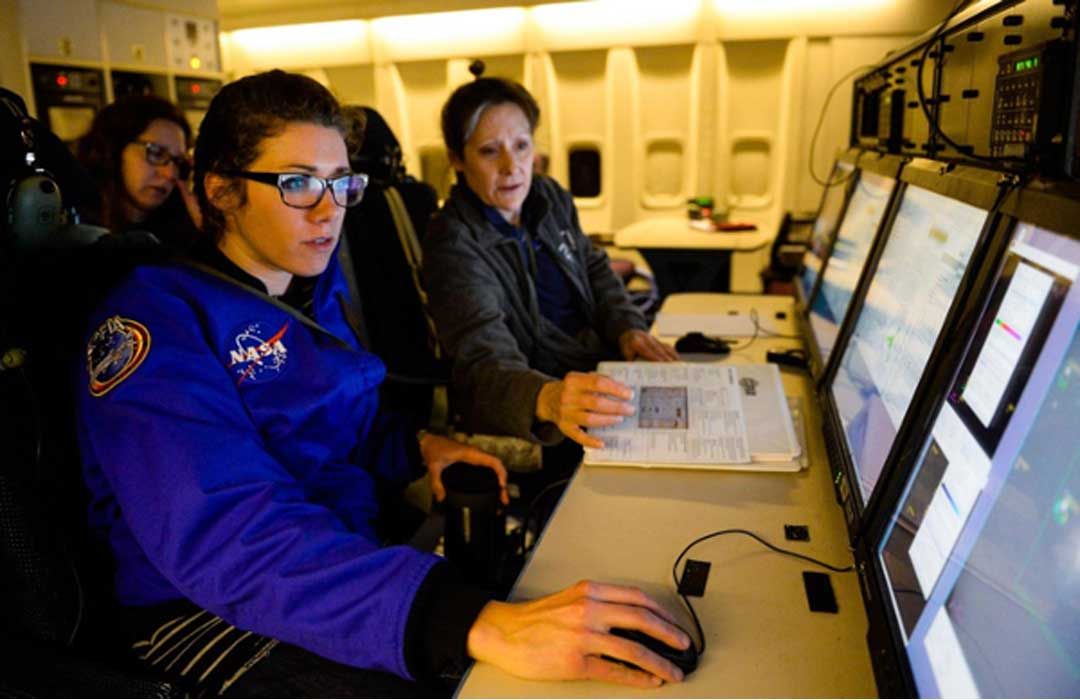 Teachers Flying High on SOFIA
Teachers Flying High on SOFIATeachers from Alaska, California, Georgia, and New Hampshire have recently flown on SOFIA, the Stratospheric Observatory for Infrared Astronomy, reaching up to 43,000 feet above the Earth. The Airborne Astronomy Ambassadors program allows teachers to witness first-hand the science in action.
[Susan Rolke, a teacher from New Hampshire] will spend time “figuring out how to incorporate all of this amazing information I learned and bringing it back to my students to get them excited about science,” she said.
“Even if all I get them to do is sometimes take a walk outside, or look up at the night sky, or question how this or that works, then I know I’ve done my job as a science teacher,” Rolke said.
- Monadnock Ledger-Transcript: Conant High School teacher recaps her experiences on board NASA’s SOFIA
- SentinelSource: Conant science teacher to take her love of astronomy to new heights
- Alaska’s New Source: NASA, SETI combine to give 3 Anchorage teachers an infrared view of the cosmos
- KRDO: ‘I just realized how special this planet is’: Natomas teacher back home after NASA flight
- California News Times: Natomas teacher back home after NASA flight
- SETI.org: 30 Teachers Selected as Airborne Astronomy Ambassadors to Bring NASA Science to Classrooms
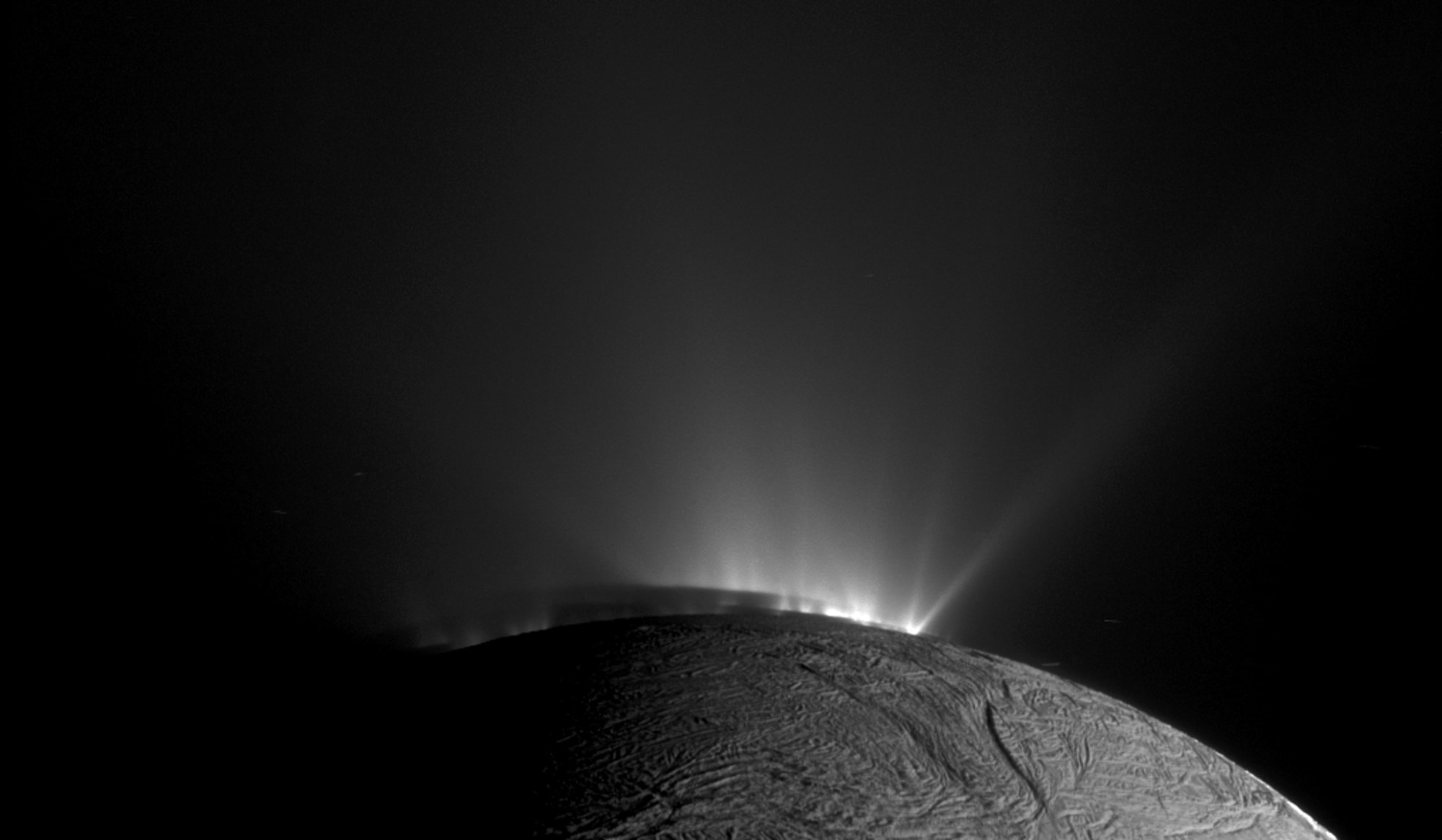 Has Saturn’s Moon Enceladus Become the Favored Bet for Life in the Solar System?
Has Saturn’s Moon Enceladus Become the Favored Bet for Life in the Solar System?Microbes on Mars? Maybe. Sub-ice swimmers on Europa? Possible. Venusians? Debatable. But methane and hydrogen near hydrothermal vents on Enceladus may point to a new place to search.
“I think I’d rate Enceladus now over Europa, and there were people who were saying Europa was a better prospect than Mars,” said Seth Shostak, the senior astronomer of the SETI Institute, a nonprofit organization near San Francisco that specializes in the search for life outside Earth. “So our ideas about where we might find critters of some sort keeps changing.”
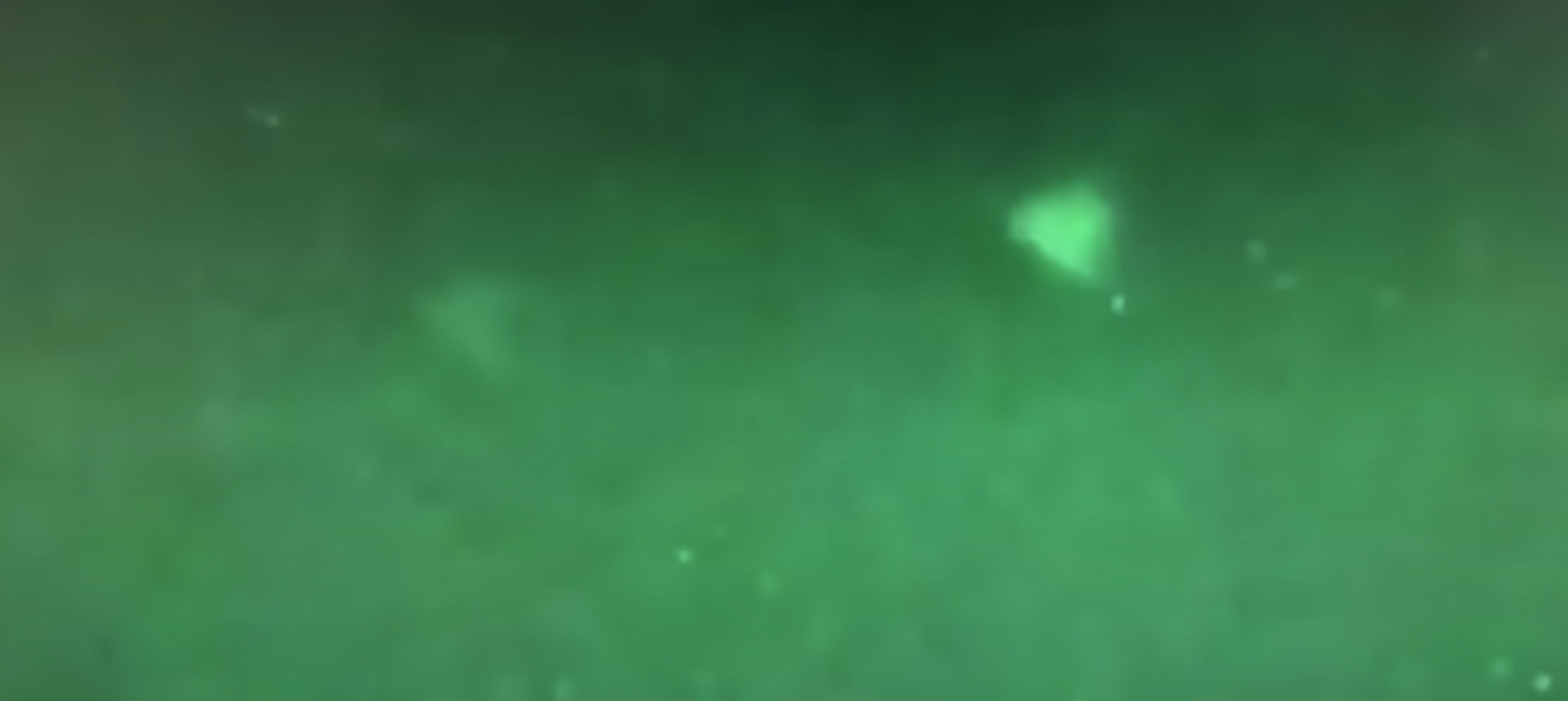 Nine Page Government Report on UAPs Doesn’t Confirm or Deny Aliens
Nine Page Government Report on UAPs Doesn’t Confirm or Deny AliensAfter much media anticipation, the newly-released report from the Pentagon is brief, doesn’t include much detail on individual “sightings,” and doesn’t mention aliens or extraterrestrials. Seth Shostak opines:
But the intelligence report on these matters has been delivered, and the publicly available version doesn’t even mention the possibility that the strange videos recorded by Navy pilots might be extraterrestrial spaceships. So the UFO crowd will undoubtedly cry 'cover up' again, and the science community will point to the continuing lack of compelling evidence for other-worldly visitors.
- News-Gazette: Big 10: What were those 143 ‘unidentified aerial phenomena’ spotted by military pilots?
- WTHR: No, the federal government’s UFO report did not mention aliens
- SETI.org: The UAP Story – The SETI Institute Weighs In
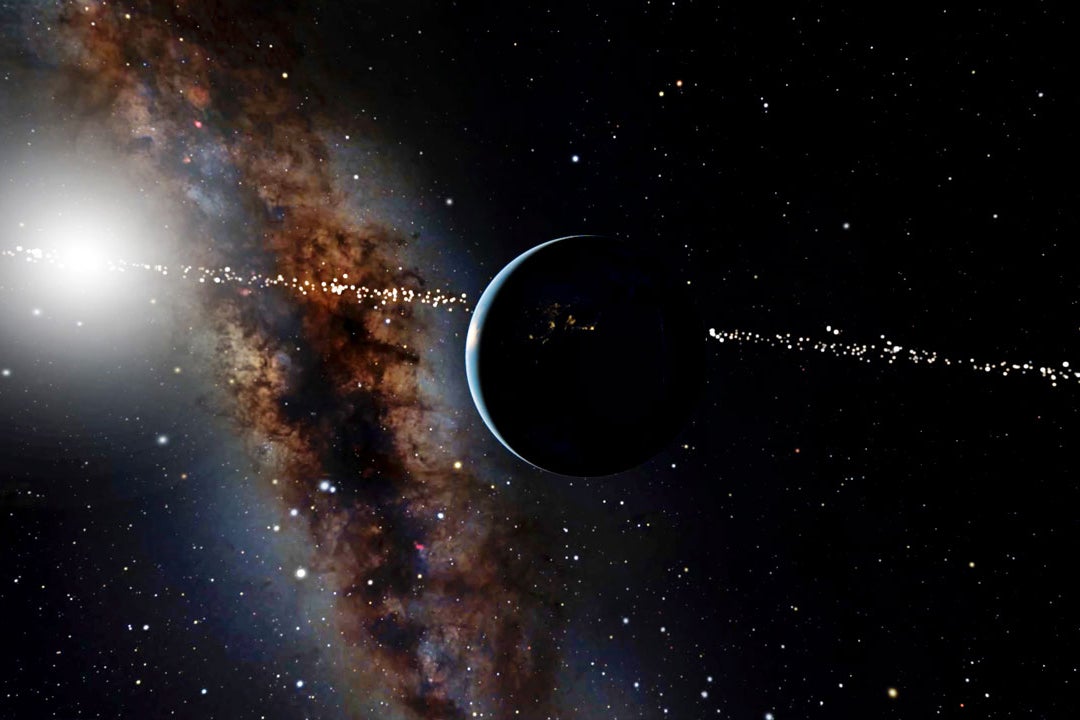 Might Earth be a Candidate in Another World’s SETI Search?
Might Earth be a Candidate in Another World’s SETI Search?A recent study has rewound the celestial clock to see how many extrasolar systems may have been able to see Earth transiting our Sun, with the same methods we use to find planets around other stars. The study discovered that up to 1,715 stars were in the right place to find Earth in the last 5,000 years – and seven of the stars are now known to have planets.
These stars and related systems should be priority one for current and future efforts to seek out exoplanets that may bear not only life but perhaps even alien technological civilizations, some astronomers say. “I would put the targets mentioned at the top of the list,” says Jill Tarter, chair emeritus for research on the search for extraterrestrial life (SETI) at the SETI Institute, who was not involved with the new study.
- Scientific American: Aliens Might Already Be Watching Us
- WGNO: Are we being watched? Study finds many stars with prime view of Earth
 Space Telescope Coronographs Aid in Imaging Exoplanets
Space Telescope Coronographs Aid in Imaging ExoplanetsTo find and image planets around other stars without inferring their presence by star wobbles or dimming, the new generation of space telescopes will include “starshades” – coronographs.
For smaller, rocky planets with shorter orbits (where Earth-like planets are more likely to be found), any light reflected from their atmospheres is likely to be washed out by their sun.
…
The EIDC [Roman Exoplanet Imaging Data Challenge], meanwhile, is a community engagement effort led by the Turnbull CGI Science Investigation Team, which in turn is led by Margaret C. Turnbull – the renowned astrophysicist and research scientist Margaret C. Turnbull of the SETI Institute. Launched in 2019, the Roman EIDC basically simulated what the Nancy Grace Mission Telescope will see with (and without) the assistance of a Starshade Rendezvous Mission.
- Universe Today: To Take the Best Direct Images of Exoplanets With Space Telescopes, we’re Going to Want Starshades
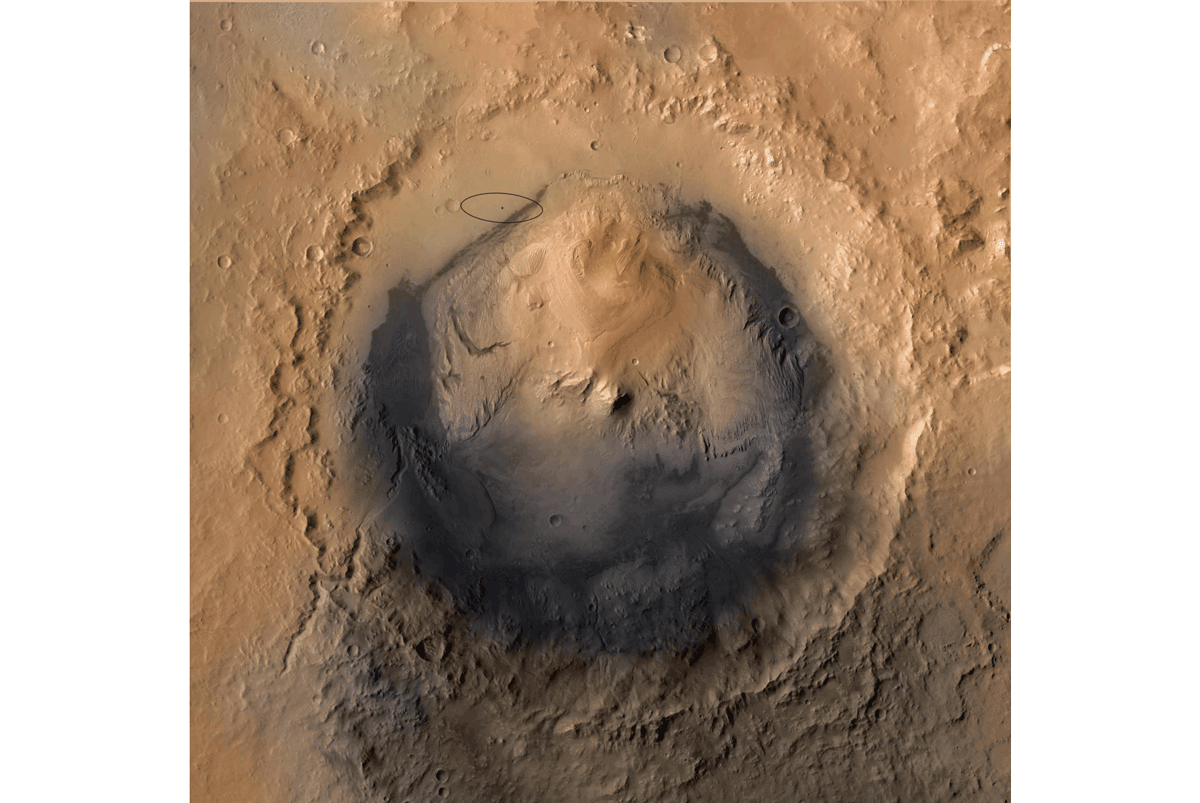 Unusual Clay Found at Gale Crater on Mars by Curiosity
Unusual Clay Found at Gale Crater on Mars by CuriosityGlauconitic clays are associated on Earth with ocean and calm lake environments and have now been identified as occurring on Mars.
While the presence of glauconitic clays does not mean that life was present on Mars, the neutral pH, moderate temperature, and long-lasting calm waters could have provided a perfect niche for microbes to flourish if they were present at Gale crater.
…
The findings of this study help explain differences between clay minerals investigated by Curiosity along its trek through different types of rock in Gale crater. “Smectite clays are common on Mars and are observed across much of the planet from orbital studies, but glauconitic clays are more unusual,” said co-author Janice Bishop of the SETI Institute.
- Bollyinside: Could the clays found in ancient Gale crater lake on Mars ever harbor life?
- SETI.org: Could Clays Found in ancient Gale Crater Lake on Mars Once Have Harbored Life?
Join hosts Seth Shostak and Molly Bentley each week as they explore emerging science and technology research.
Skeptic Check: Pentagon UFO Report
When the government announced it would release a report about strange aerial phenomena, public excitement and media coverage took off like a Saturn V rocket. But what’s really in the report? Do we finally have the long-awaited evidence of alien visitation? We discuss the report’s content and implications with both a former U.S. Air Force pilot and a skeptical investigator. And if it hasn’t proven alien presence, what happens next with those who nonetheless think Earth is being visited?
With guests James McGaha and Mick West
Cicadas and Zombie Seeds
Rip van Winkle snoozed for 20 years, and Sleeping Beauty for 100. But seeds in an underground bottle have easily beaten both these records, germinating long after the scientist who buried them a few feet underground had died. We investigate biology’s long haulers–from seeds to small creatures–who are able to wake up and restart their lives, even after tens of thousands of years. Also, what are those buried 17-year cicadas doing as they wait to come back topside?
With guests Chris Simon, Sarah Dwyer, Frank Telewski, and Rocco Mancinelli
More Big Picture Science episodes can be found at http://bigpicturescience.org/episodes.
SETI Institute hosts interview cutting-edge scientists each week on social media. Recent SETI Live episodes include:
SETI Institute, International Space Orchestra and Kid Cudi?
What are the SETI Institute, the International Space Orchestra and Kid Cudi up to? As part of this year's Amazon Prime Day, they teamed up on 25-minute experience featuring songs from Cudi’s 2020 album Man on the Moon III: The Chosen, all brought to life with the International Space Orchestra serving as Cudi’s backing band.
To celebrate the collaboration, the International Space Orchestra, Nelly Ben Hayoun Studios, and the SETI Institute will host a special SETI Live conversation. Moderated by senior scientist Dr. Franck Marchis, this live stream will include ISO member scientists, SETI Institute scientist Dr. Janice Bishop, Director of the Solar System Exploration Research Virtual Institute (SSERVI) Greg Schmidt, and ISO Director and Founder Dr. Nelly Ben Hayoun-Stépanian. We'll even share a short video about the project!
Using AI to Drive Breakthroughs in Space Science
Join SETI Institute President Bill Diamond in conversation with James Parr, Director of Frontier Development Lab (FDL). Now in its sixth year, FDL’s goal is to apply the synergies between physics, simulation and machine learning to problems important to space exploration and humanity.
FDL is a public-private partnership with NASA in the USA and ESA in Europe. It brings together some of the brightest minds from space science, AI and the commercial sector, including Google Cloud, Lockheed Martin, Luxembourg Space Agency, Intel, Microsoft, MIT Portugal, Mayo Clinic, USGS and NVIDIA. New partners this year include Lawrence Berkeley National Laboratory. Additional partners include IBM and Planet. FDL is hosted by the SETI Institute and NASA Ames Research Center.
This year, teams comprised of researchers will use AI and ML to tackle seven challenges in the areas of heliophysics, astronaut health, lunar resources and Earth science.
Predicting Coastal Flooding with Machine Learning/AI
Coastal flooding is one of the most significant disasters that human society faces, exacerbated by a denser coastal population than inland. Climate change is causing rising sea surface levels, making the coastal regions more vulnerable to flooding. It is critical to predict flooding in coastal areas in a timely manner and assess the impact under various atmospheric and ocean conditions.
Join us as we talk with the Frontier Development Lab's (FDL) 2021 Digital Twin Earth - Coast's team to discuss how they are developing the first coastal digital twin providing fast and accurate water level dynamics at coastal regions using state-of-art deep learning techniques.
Videos of all past Facebook Live events can be found on our Facebook page, https://www.facebook.com/SETIInstitute/, or on our YouTube channel, https://www.youtube.com/SETIInstitute.





